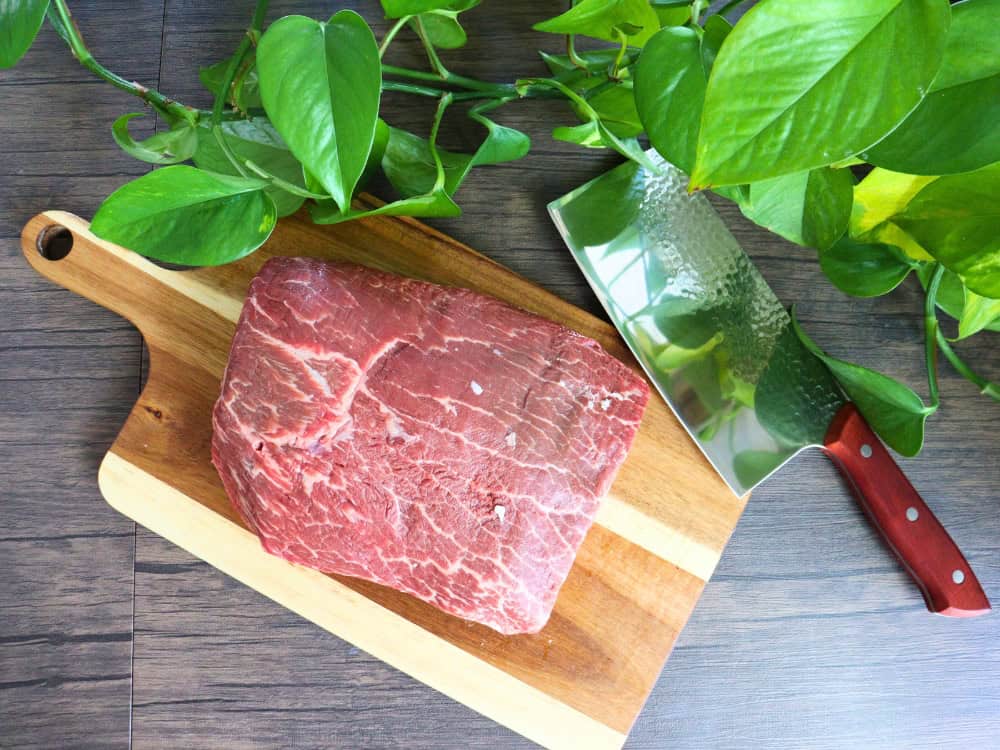
How to Freeze Meat Without Plastic: Beef Up Your Sustainable Food Storage
Ready to tackle the hefty challenge of cooking up a zero waste kitchen?
Perhaps like many people, you’ve run into a big obstacle in this department: learning how to freeze meat without plastic.
Food waste is responsible for 6-8% of all human-caused greenhouse gas emissions—and that unlike most other spoiled foods, freezer burnt meat is NOT something you can safely toss in your home compost bin. When you add in the high environmental impact associated with animal-based foods, it’s really important to ensure no meaty morsels go to waste. Our planet is at steak, after all.
Whether you’re pescatarian, paleo, or protein-lover, let’s take a bite out of zero waste techniques for freezing meat.
The Full List Of The Best Ways To Freeze Meat Without Plastic
- Different ways to freeze meat
- Why opt for plastic-free freezer storage
- How to store meat in the freezer without plastic
- Containers for freezing meat without plastic
1. Different Ways To Freeze Meat
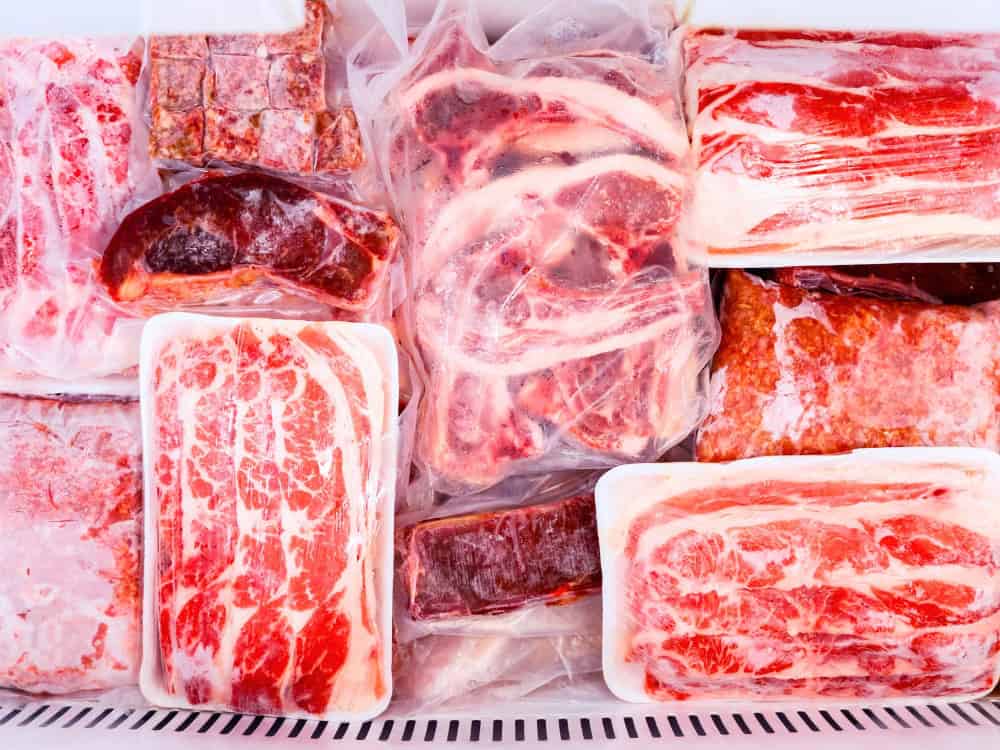
Plastic is the premier choice for food preservation—especially for meat. Because of the higher bacterial risk meat poses, people often resort to disposable storage solutions rather than worry about thoroughly cleaning something reusable. Plastic bags and wrap also tend to be more fleixble, air tight, and durable that some other solutions, so it’s easy to see why its a go-to when you get home from the butcher counter.
But it’s not the only way of freezing beef, chicken, and more. Here are some other common methods:
- Aluminum foil: Wrapping meat in aluminum foil is a short-term storage option only. Being easily damaged, holey or improperly sealed aluminum foil can lead to freezer burn and messy thawing.
- Tupperware: Again, they can work for a short period of time but are plastic-options are prone to cracking and breaking as they get brittle in cold, freezer temperatures.
- Supermarket wrapping: This is also only advisable for short-term freezing because it’s not as air-tight as some other options—unless you suck extra air out using a straw.
- Vacuum seal bags: This is the single BEST way to freeze meat without risking freezer burn, as it completely sucks out the air and keeps your protein in primo condition for londer. Unfortunately, it usually utilizes either single-use plastic bags or films, which can easily be heat-sealed shut by the machine. However, there are reusable options out there, which we’ll touch on below.
- Freezer paper: A heavy-duty paper coated on one side with plastic, freezer paper is often used in combination with some of the other options because it preserves the meat, holds the juices, and can be placed in a bag or wrapped in aluminum foil for even better storage.
2. Why Opt For Plastic-Free Freezer Storage
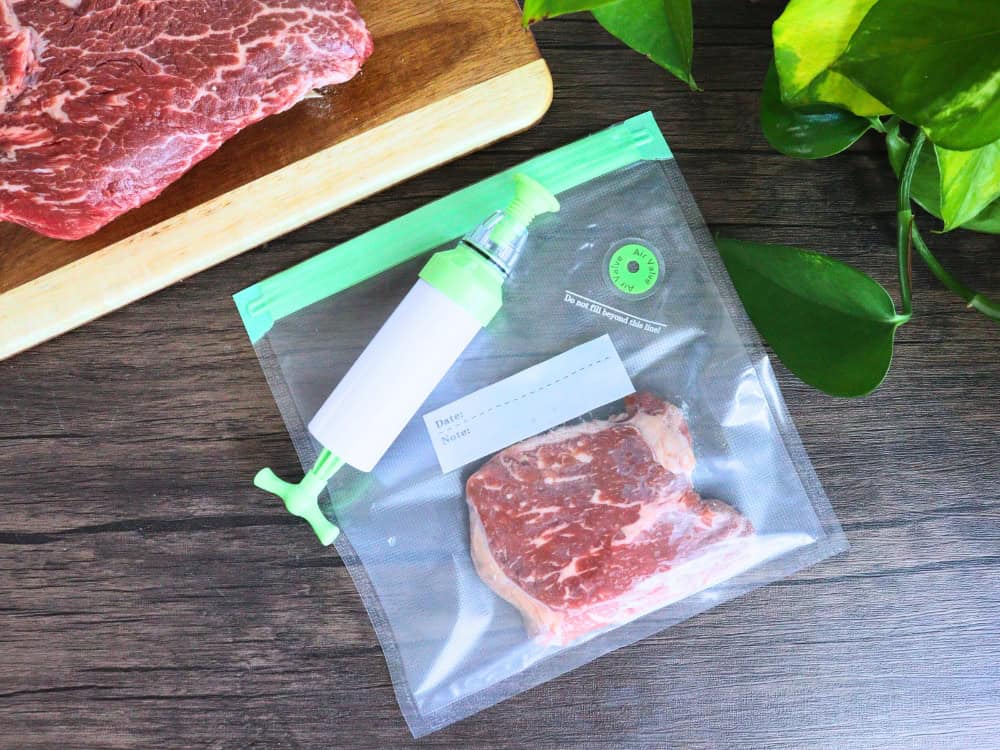
Potentially causing more food waste aside, there are several reasons why you should think twice before reaching for plastic next time you need to freeze meat.
Health
Many types of plastics contain plasticizers, which are known to be high in phthalates—a group of chemicals known to pose a range of health concerns, including cancer, hormone disruption, and reproductive issues.
Let’s not forget the most well-known concern with plastic: Bisphenol A, or BPA. BPA is a weak synthetic estrogen that can also lead to several health concerns, including endocrine disorders, reproductive issues, hormone imbalances, infertility, metabolic disorders, cancer, and increased risk for cardiovascular disease. Even BPS or BPF as replacements for BPA are proving to be considered unsafe.
Saran Wrap contains vinyl chloride, which is considered to be one of the worst toxic additives—for both our bodies and the planet.
Sustainability
Plastic wrap is made from polyethylene, polyvinyl chloride (PVC), or polyvinylidene chloride (PVDC)—which are all petroleum-derived and made using an energy- and chemical-intensive process.
Not only is the production of these plastic-based materials problematic, but disposal is even worse. While in theory, plastic materials used for freezing meat can be reused, they’re usually not due to (valid) fears of food-borne illnesses and contamination.
Just one-fifth of 1%, or 0.2% of Ziploc bags actually end up being recycled
Instead, they end up degrading in landfills or being incinerated-—where those with PVC and PVDC will release seriously dangerous toxic chemicals called dioxins—or polluting the environment.
3. How To Store Meat In The Freezer Without Plastic
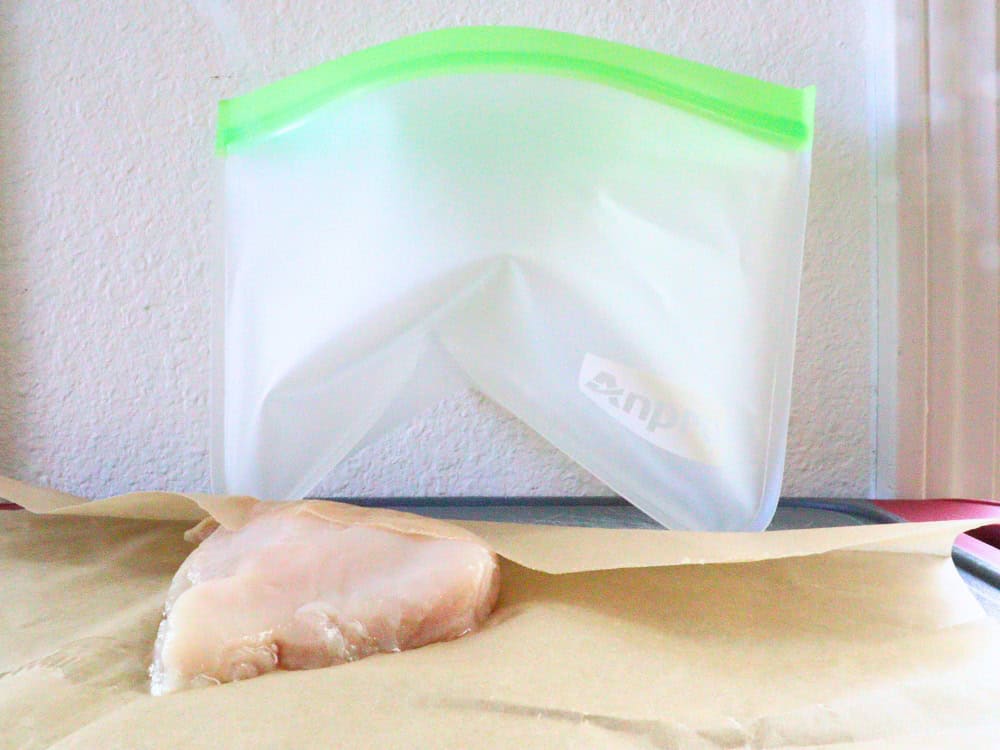
Freezing meat without plastic is actually much easier than you might think. In fact, the process really only requires three simple steps.
1. Source meat without plastic. Will you want that entire pork shoulder for a family reunion in a few months? Or are you cooking for one? Once you know that, you can source the meat to suit. At the butcher shop or supermarket meat counter, ask if the meat can be cut into individual portions and wrapped separately. Bring your own container and ask if you’ll put it in that.
2. Tightly wrap the meat. Some butchers might have already wrapped it in butcher paper, but if not, use greaseproof paper (like wax paper or compostable, unbleached brown parchment paper—the white version has been chlorine-bleached and may also leach dioxins). Instead of sealing with freezer tape (which often contains plastic), reuse rubber bands from your produce.
3. Place the wrapped meat inside a bag or container. We like reusable silicone bags or glass food storage containers. The important thing here is to minimize the amount of air in the bag or container as much as possible, as this will help to prevent freezer burn.
How To Freeze Cooked Meat & Prepared Meals
Whether you’re meal-prepping or just made a large meal with saving leftovers, start by separating them into portioned containers. That way, you can thaw/reheat only what will be eaten.
Rectangular glass storage containers, stainless steel tiffins, or silicone bags can be used for freezing cooked meat. For those on a budget, any glass container (an old pasta jar, pickle jar, nut butter container) should work. We use these all the time, especially for things like chili and soup. Just be sure to leave about an inch of empty headspace at the top of the jar to account for expansion when freezing. If you fill all the way, the container could break, and that’s a mess no one wants.
4. Containers For Freezing Meat Without Plastic
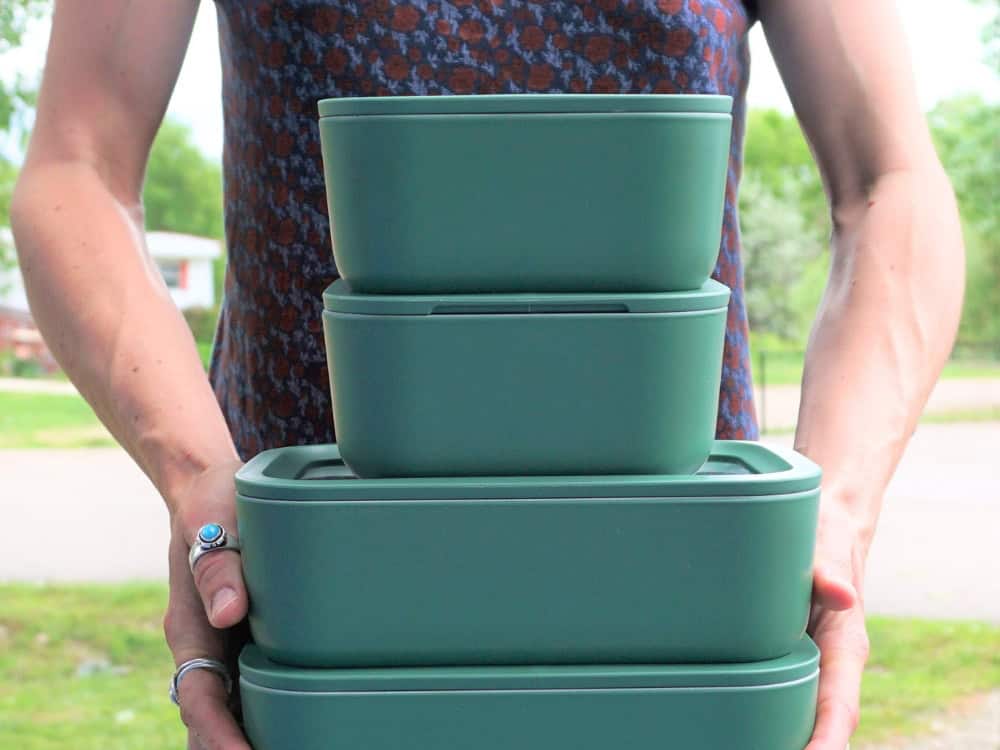
Most plastic-free food storage containers will work for freezing beef and the like, but some work a bit better than others. Here are some of our favorites and tips for when to use each one:
- Old glass jars: As long as they’re durable and you’re careful not to overfill, this is the most eco-friendly and affordable option. They’re best for meat soups and small cuts of meat like stew meat that can be tightly packed with minimal airspace. Unless you’re using a vacuum seal jar top, avoid freezing larger cuts of meat with a lot of air in jars.
- Metal storage tins: Similar to glass jars, except they won’t break if contents expand and do the larger opening, you can tightly pack larger cuts of meat in them without much airspace.
- High-quality glass containers: Borosilicate or tempered glass is up to five times stronger than normal glass as well as scratch, stain, and odor-resistant. This means they’re comparable to metal containers in terms of durability and utility, with the added advantage of being able to see the contents at a glance.
- Silicone bags: This is primarily what we use and we love how flexible, versatile, reusable, and durable these are for everything from freezing lunch meat to keeping produce fresh in the fridge. Because silicone is far more durable and temperature resilient than plastic, you’ll never need to worry about it splitting and letting in air over time. As long as they’re pure silicone (careful when buying, as some makers use plastic in the zipper part), they’re also dishwasher safe so you can fully disinfect after thawing that ground beef.
- Sous vide bags: Though designed to be used with a sous vide machine, they’re essentially just reusable vacuum seal bags that can be used for all purposes. They even come with a compatible electric or hand-pump vacuum device so you don’t need the whole vacuum sealer. Disclaimer: This one isn’t actually plastic-free, but we still love ours because they are at least endlessly reusable and provide an air-tight seal without the waste of single-use vacuum bags.
5. Other Tips For Freezing Meat Without With Plastic
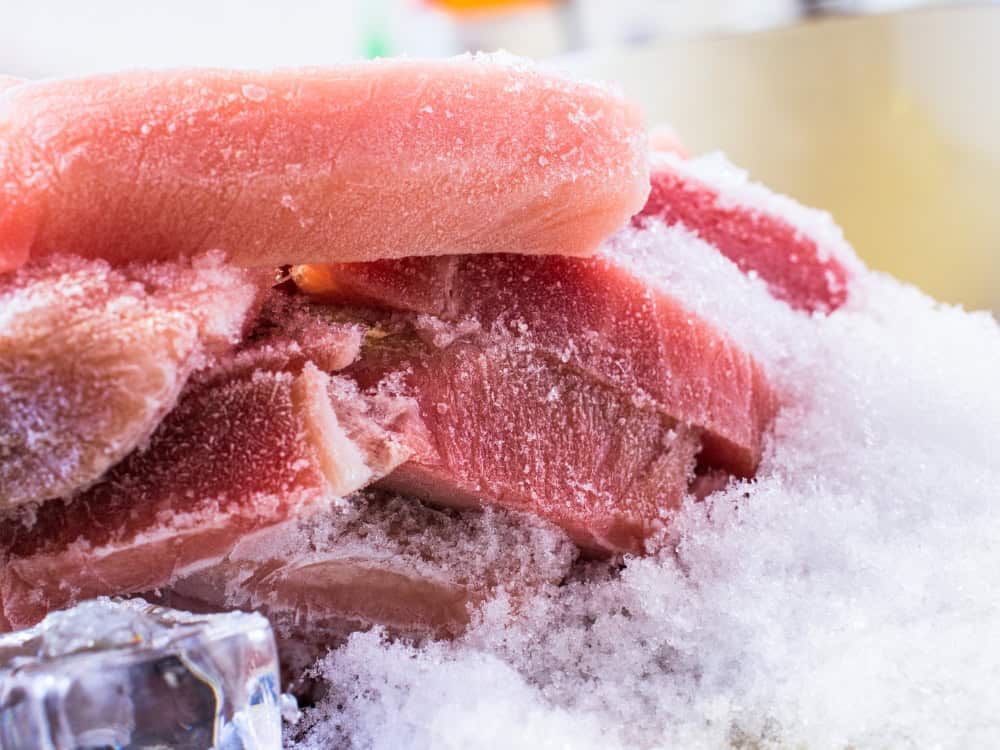
You don’t want to go to all this trouble figuring out how to freeze meat without plastic wrap and bags, only to end up wasting it because of freezer burn. To prevent this, be sure to:
- Make sure your freezer is at an appropriate temperature (at or just below freezing).
- Chill the food first. Never put hot food directly in the freezer. First, let it cool then place it in the fridge for at least one or two hours.
- Wrap tightly. Freezer burn happens when a layer of ice has room to form on the surface of the food. When there’s less air available, there’s less chance of freezer burn.
- Use small batches. Instead of freezing a lot of food at once, add a few items at a time.
- Fill the freezer adequately. Avoid overfilling or underfilling your freezer. As a rule of thumb, it should be around three-quarters full.
- Keep your freezer clean and organized. Ever find something in your freezer from several years ago? It happens, but try not to let your frozen meat hide in the back of the freezer. Instead, keep everything clean, organized, and labeled. Place new items in the back, so you’ll use the oldest frozen items first.
- Know how long to freeze meat. Even properly processed, meat won’t last forever in the freezer and there are different time frames for different types of meat. For example, processed meats like hot dogs and lunch meat should only be frozen for 2 months max, ground meat for 4 months max, while whole uncooked cuts of meat (like steak and chicken breasts) can hold up in the freezer for up to 12 months. Note: these are general recommended times in which the flavor and nutrition are said to be best kept, but we’ve been known to store meat for longer.
Did you know we Have a Newsletter?
We cover the latest in sustainable living, fashion, zero waste, beauty, travel, finance and more…
Pin these:






If you are truly concerned about sustainability, you should be ditching meat and other animal products completely. Recent estimates put animal agriculture’s carbon emissions as contributing over half the annual global CO2 output, in addition to being responsible for massive habitat loss, pollution, Amazon deforestation, and more. Put the planet before what you put on your plate.